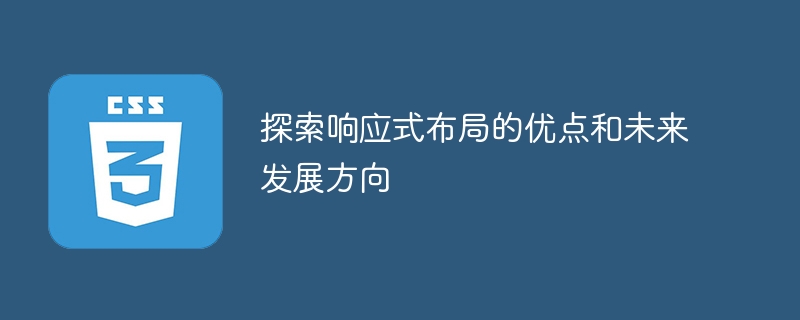

Exploring the advantages and future development directions of responsive layout
With the popularization of mobile devices and the rapid development of the Internet, responsive layout has become an important aspect in the field of front-end development. Important topics. Responsive layout allows the website to adapt to different screen sizes and device types, providing a better user experience. This article explores the benefits and future directions of responsive layout, and provides some concrete code examples.
1. Advantages of responsive layout
2. How to implement responsive layout
Responsive layout can be implemented using technologies such as media query, elastic grid and fluid layout.
@media screen and (max-width: 768px) {
/* 在屏幕宽度小于768像素时应用此样式 */
body {
font-size: 14px;
}
}.container {
display: flex;
flex-wrap: wrap;
}
.column {
width: 25%;
}.container {
width: 100%;
}
.column {
width: 50%;
float: left;
}3. The future development direction of responsive layout
Responsive layout will continue to provide better features in the future development User experience and development efficiency.
Summary:
Responsive layout is a flexible front-end development technology that enables websites to provide a consistent user experience on different screen sizes and devices. Achieve responsive layout effects through technologies such as media queries, elastic grid, and fluid layout. In the future, responsive layout will continue to develop to provide users with better user experience and development efficiency.
The above is the detailed content of Research the benefits and future trends of responsive layouts. For more information, please follow other related articles on the PHP Chinese website!
 What are the web servers?
What are the web servers?
 How to register for corporate Alipay
How to register for corporate Alipay
 js string to array
js string to array
 How to turn off windows security center
How to turn off windows security center
 langbar.chm
langbar.chm
 How to delete my WeChat address
How to delete my WeChat address
 Introduction to Kirchhoff's theorem
Introduction to Kirchhoff's theorem
 The difference between flutter and uniapp
The difference between flutter and uniapp
 How to solve the problem when the computer CPU temperature is too high
How to solve the problem when the computer CPU temperature is too high




